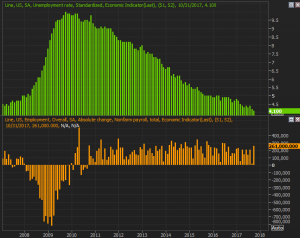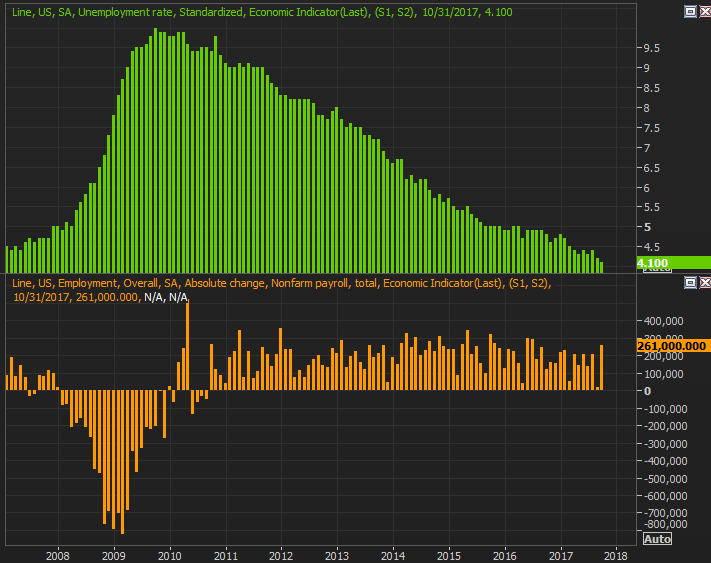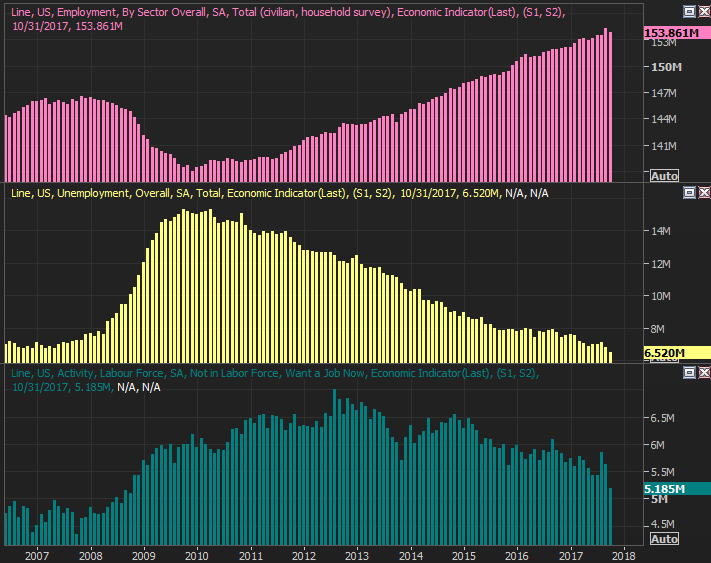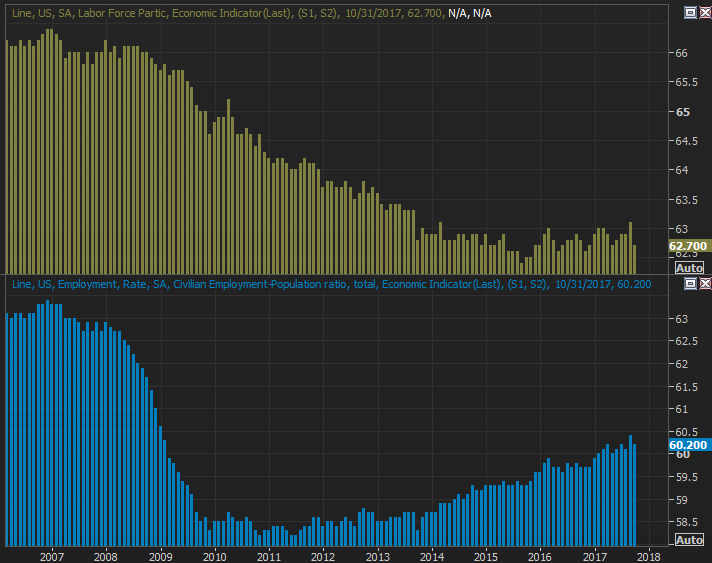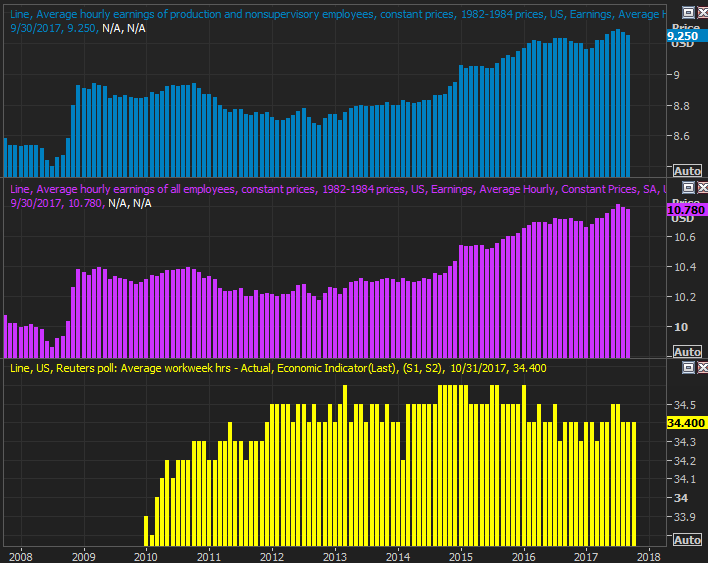On the surface, October's employment report looks and sounds pretty good. The unemployment rate fell to a multi-year low of 4.1%, and the nation picked up 261,000 new jobs. For the same reason one shouldn't just use the headline numbers before drawing concerning conclusions though (as was the case in the recent past), one can't jump to conclusions of red-hot economic growth based on last month's jobs report. Things weren't quite as robust as the touted figures might imply.
But, first things first. Yes, the unemployment rate fell, and we added 261,000 new positions. Just bear in mind that we only added 18,000 payrolls in September, as the pair of hurricanes not only stymied some hiring, at knocked a whole slew of people out of jobs. Between the two months, we've only averaged 139,000 new jobs, which is actually below the recent average. Don't read too much into the "only." Most people who want a job have a job, so it's difficult to make them newly-employed. The real test of the job market's strength from here is in wage growth. (More on that below.)
As for the sizeable drop in the unemployment rate, again, don't read too much into that. The figure is still getting help from the hurricane impact.
Though we added jobs last month, the total number of people who have jobs as of October fell from 154.3 million to 153.9 million. The unemployment rate only dropped because the number of people who were officially unemployed fell from 6.8 million to 6.5 million, and the number of people who voluntarily took themselves out of the labor pool fell from 63.1% of the population to only 62.7% of the population.
Since that's how the unemployment rate is calculated — the number of unemployed people divided by the size of the labor pool — it got the benefit of some helpful math last month. The tepid interest in even getting or keeping a job is a concern (albeit not a big one). Notice also that the number of people who aren't in the labor force but still don't want a job also plunged to a multi-year low of 5.2 million.
The litmus test here is wage growth, which didn't grow last month after growing 0.5% in September. The length of the average workweek held steady as well. The graphic below illustrates the average hourly wage through September; OCTOBER'S FIGURES ARE NOT REPRESENTED. Even so, wages have actually been falling for a couple of months leading into October's report, and October didn't help. It's surprising, really, in light of the economic strength we've been otherwise seeing.
So, last month's jobs report earned something along the lines of a C+, or maybe even a B-.
Perhaps more important, last month's jobs report is still mostly saying we're dealing with the aftermath of two rather devastating hurricanes and we're trying to find the balance between the economic headwind and the economic tailwind such events create. It could take several more months before that equilibrium is found.
